Of the mammals that reside on the Museum property, two have been conspicuously preparing for the oncoming winter season. They are both members of the same family (Sciuridae) but each has a different life style (one is a tree squirrel, the other a ground squirrel) and they have different strategies of how to cope with the cold.
Gray Squirrels cache food away for later use for the times when their fair-weather food items become scarce. During the warmer months they eat roots, bulbs, fruit, seeds, fungi, bird’s eggs, and yes, bird nestlings. The bulk of their cached food, however, consists of acorns, beechnuts, walnuts, and other assorted nuts.
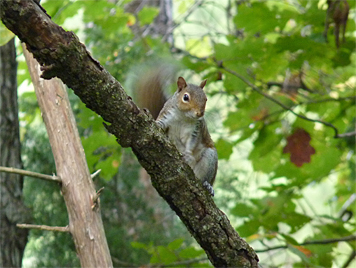
Gray Squirrels build nests in a natural tree cavity, or more conspicuously, in the crotch of a tree. The nest is made of twigs and small branches and is lined with leaves, moss and any other soft material that the squirrel can find lying about. They may or may not use this rather untidy-looking structure as a nest for their young. Often, it’s simply a place to while away the coldest days of the winter in relative comfort.
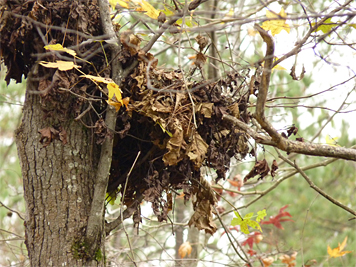
Groundhogs, the more terrestrial of the two squirrels (Groundhogs can and do climb trees, especially mulberry trees with big, ripe berries on them), does not cache away food, but instead carries its winter food around on its body in the form of fat. You can often see them in fall hurriedly scarfing down grass, clover, or fruit (I once saw one in Catch the Wind, up on its haunches leasurely eating what looked to be a Granny Smith Apple – feeding the wildlife is not encouraged), paying little if any attention to the many Museum Guests strolling by.
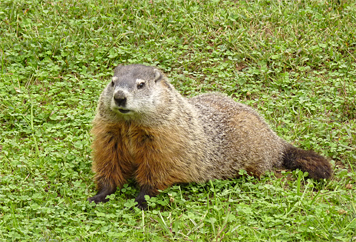
The other, rather significant, differences between these two rodents is that Groundhogs burrow into the ground and hibernate within the burrows.
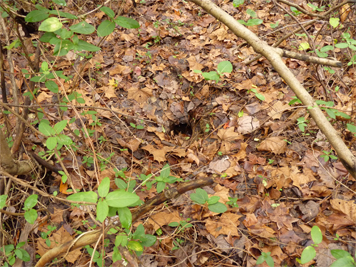
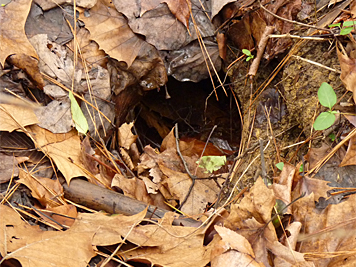
By the way, Groundhogs (Marmota monax) are also called Woodchucks. Both names are correct as long as you’re referring to Marmota monax. The common name Woodchuck is apparently a corruption of the Cree Indian word for marmots, Wuchak, and has nothing to do with the animal’s ability to chuck wood.
Groundhogs have also been called Whisltepigs. I, personally, have never heard anyone refer to a Groundhog as a Whistlepig, nor have I ever heard a Groundhog whistle. Fortunately, someone at National Geographic has recorded one of these large rodent’s voice and has placed that recording on the Internet for all to hear.
None of the above names actually fit the animal, although some come close. Marmota monax does spend most of its time on or under the ground. But do they really look like hogs, or pigs? They definitely don’t chuck wood, but the Wuchak name seems to fit since it was the name given them by the people who first lived among them, Native Americans, although the name wasn’t specific to Marmota monax, but to all marmots.
If you’ve listened to the audio link above, then you may agree that it does seem as though Marmota monax whistles, sort of. Perhaps Ground Whistler would be a more appropriate name, or Whistling Marmot, maybe…
